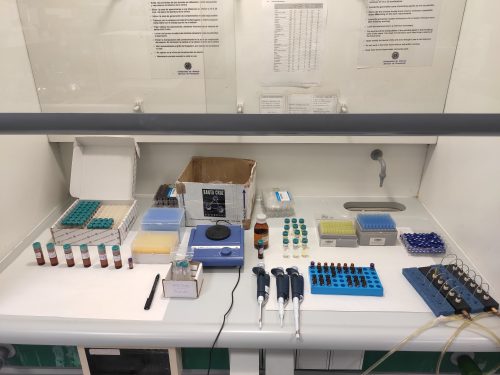The INSIGNIA project has drawn the attention of the Spanish TV channel Canal Sur! Two of their reporters visited the lab in Almería and asked some questions about the APIStrips and the project progress. Two days later, a short description of the work performed by the INSIGNIA group was broadcast on the news with a small part of the interviews to the Almería team.
Almería Team
The University of Almería team is doing their best to analyze the APIStrips and the beebread samples. Up to five people are involved in the extractions, under the direction of Amadeo Rodríguez. 
Recent APIStrips analyses
APIStrips analyses in Almería are running at a good pace! We perform their extraction the day of arrival and the extracts are stored in the freezer until we can analyze them. This can imply less than 24 hours or up to several days. And then…

How do we do it? – APIStrips
Is it possible to analyze the pesticides inside a beehive without taking the pollen nor the beebread, and with a passive sampling strategy? The INSIGNIA members think it is.
Tenax® is a material that adsorbs molecules onto its surface, providing information about the contaminants in a certain environment. It would be enough to glue it to a plastic strip placed inside the hives for a certain amount of time to get information about the pesticides in contact with the bees. The problem, however, is that Tenax® is commercialized as a fine powder. Bees try to remove it from their hives and, usually, they succeed.
After testing out many different materials and means to glue Tenax® to their surfaces, a different approach was adopted. Tenax® can be dissolved in dichloromethane, changing its granular appearance.

